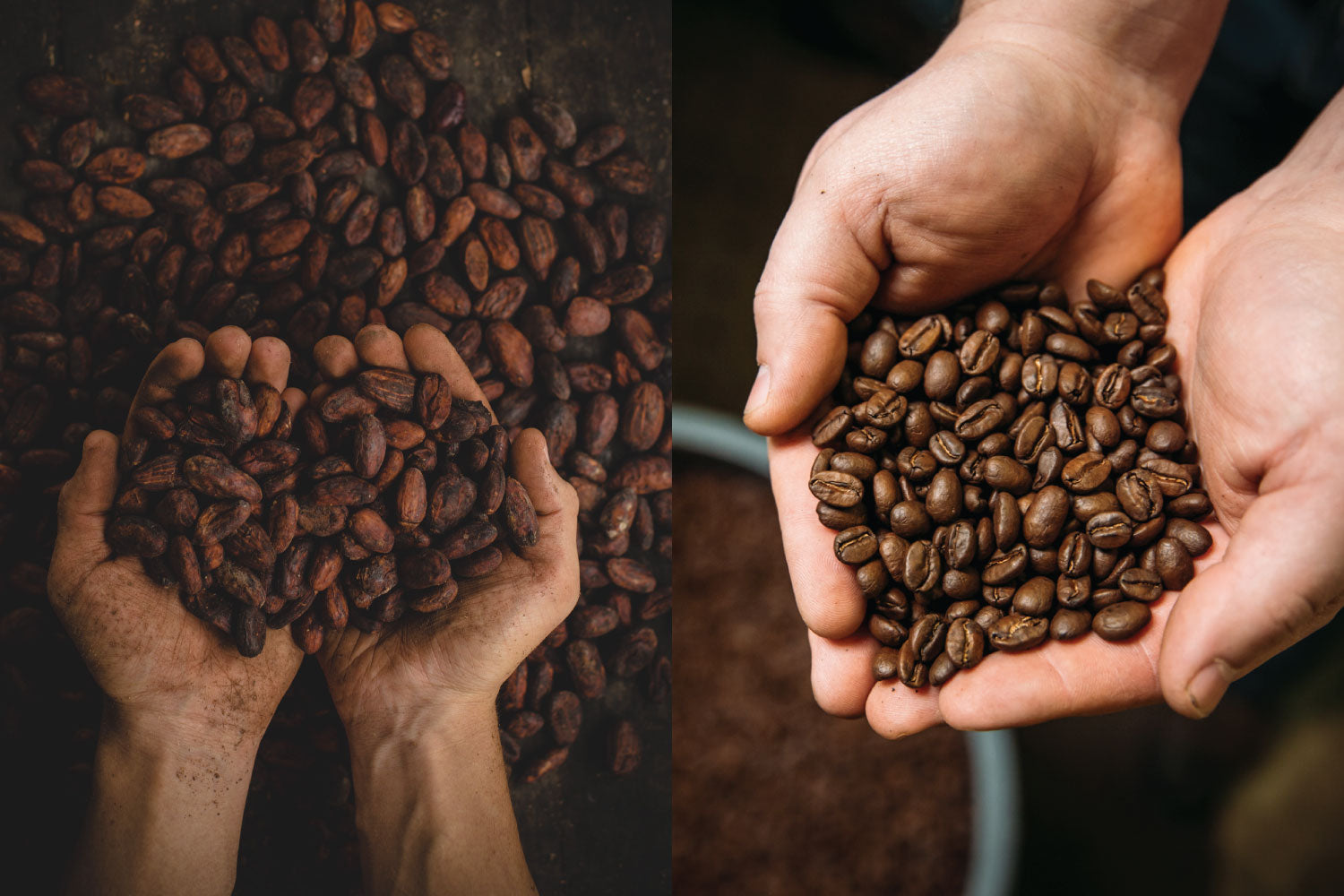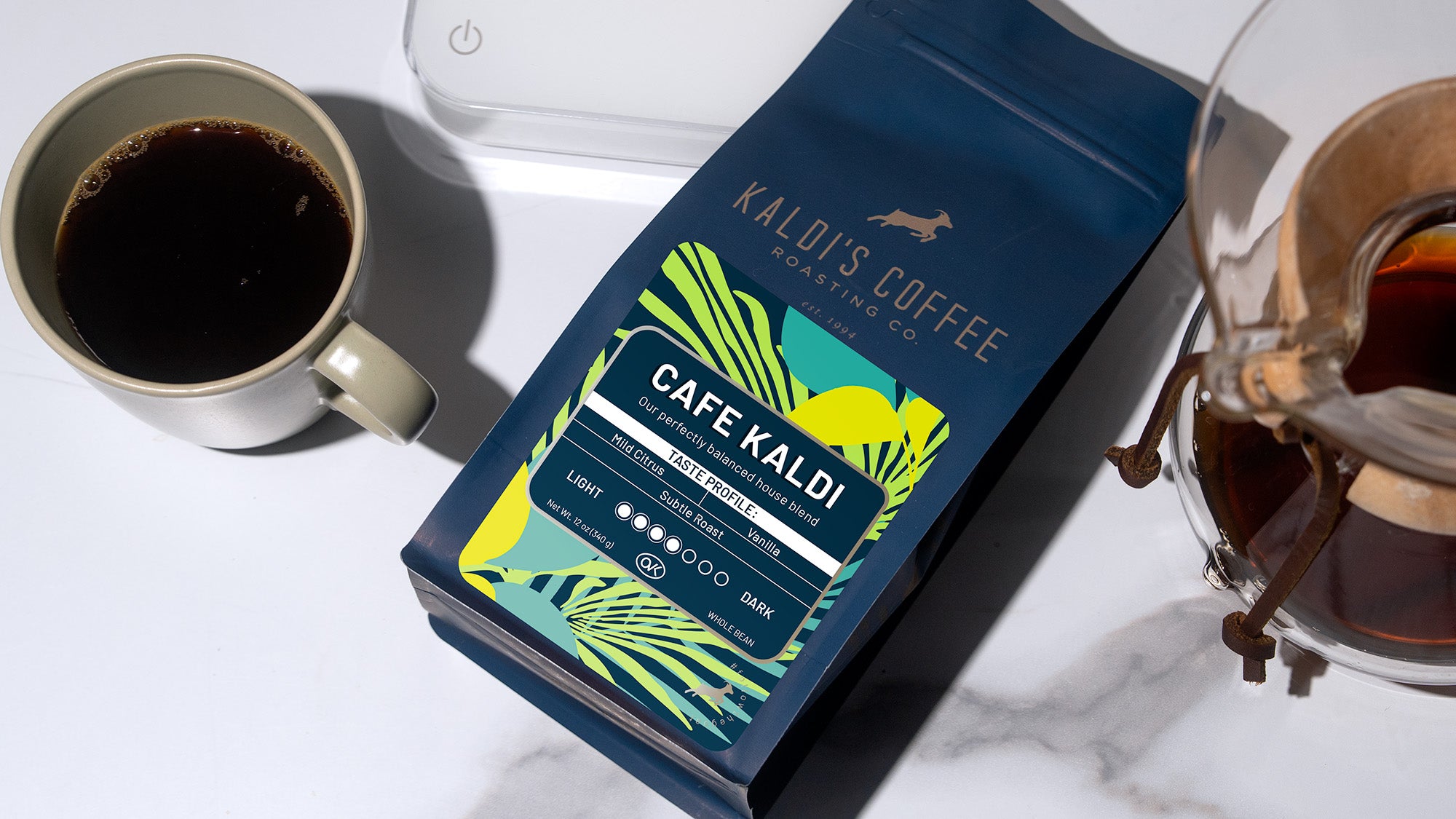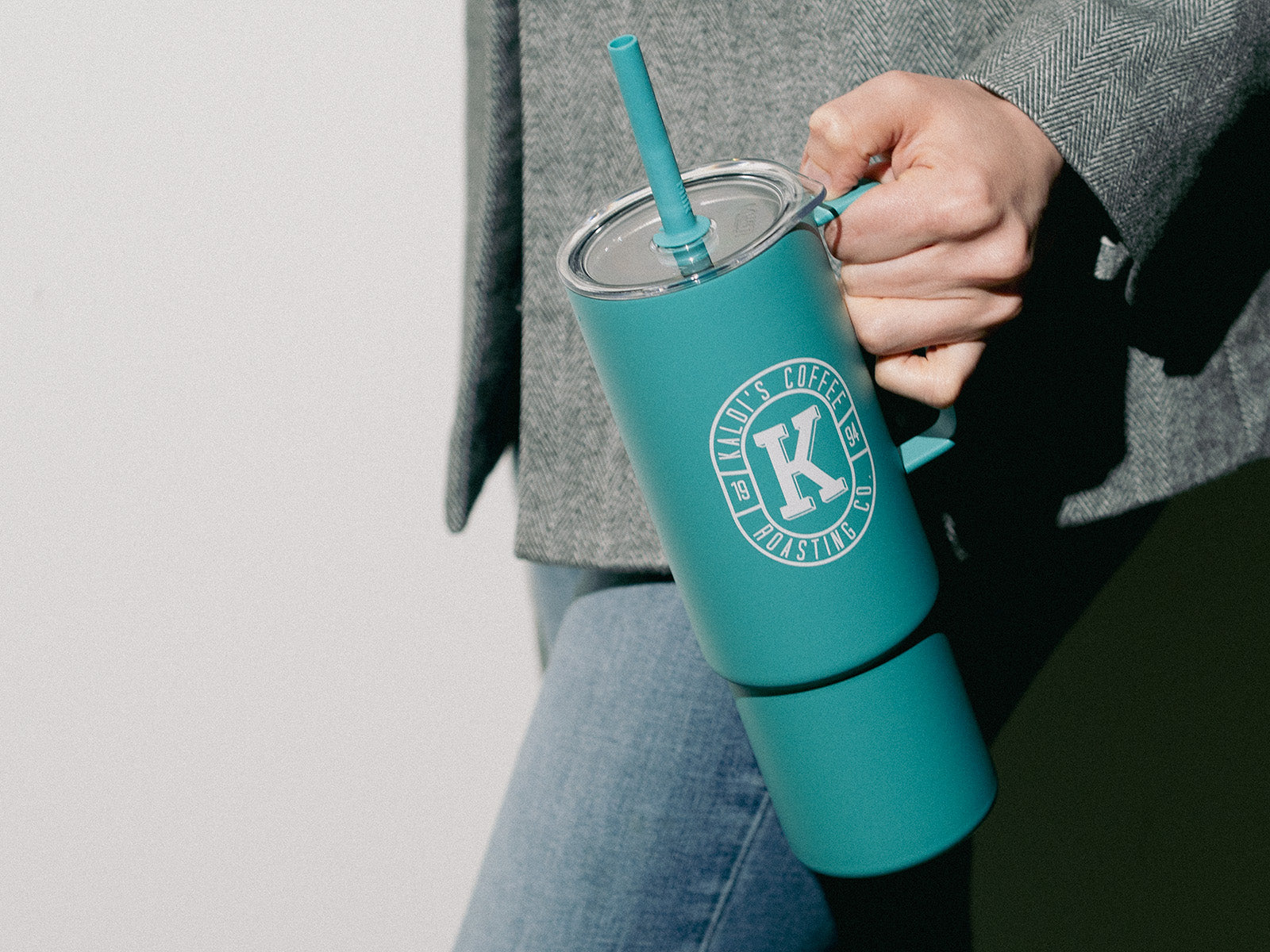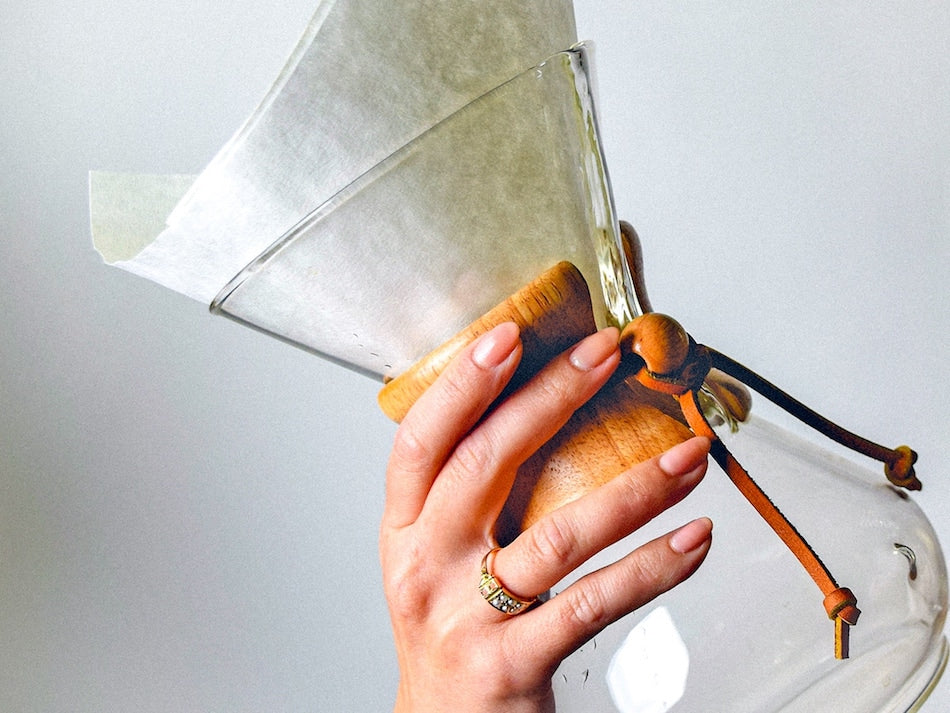Written in collaboration with Honeymoon Chocolates
Welcome to Part 2 of 3 of our Coffee & Chocolate blog series, a collaboration with Honeymoon Chocolates and Kaldi’s Coffee that aims to show the remarkable similarities between these two extraordinary food products.
In Part 1: "Where Do Coffee & Chocolate Come From?", we showed you how coffee and chocolate share some similarities in their origins and how both are picked and processed. Now, we invite you to take an in-depth look into how we transform the raw cacao and green coffee into the beverages and treats you know and love!
ROASTING CACAO AND COFFEE BEANS
Cacao arrives from origin in large burlap sacks (much like coffee). Honeymoon Chocolates’ goal upon arrival is sorting out foreign objects from the sack such as loose canvas, twigs, and double beans. After sorting, the beans are prepped for roasting. The temperatures of cacao roasts run at lower temps than coffee.

Much like coffee, roasting brings out specific flavors while excluding volatile tasting notes from the cacao bean. Honeymoon strives to craft a bar that is tasty and consistent. To remove as many variables as possible, they have to be consistent in the roasters they use, roast curves, and specific harvests.
Roasting coffee is, in theory, fairly simple. Before the mid-19th century, most coffee used to be home-roasted each day! Kaldi’s Coffee utilizes classically-restored cast-iron Probat roasters, and the logistical hurdles to maintaining this equipment sometimes poses issues for our demanding production schedule. Additionally, the coffee itself can be trickier than one first thinks.

Many varieties of natural (dry) processed coffee beans can roast unpredictably, and take more work to develop flavor uniformity. Some specific coffee varieties like Pacamara, which are much larger than the average coffee bean, also require some more experimentation with the roast profile.
CONSISTENCY IS KEY
Most cacao farms have three different harvests in a single year. This can be an obstacle for our consistency. Being a small maker, Honeymoon Chocolates doesn’t buy enough cacao to last a whole year - which means that the tasting notes that they worked to develop the harvest prior are all thrown out the door.
For example, their Peru bar this year had two variations. The 2019 bean was roasted in 2020 and tasted of cocoa, mocha, and vanilla. When the early 2020 harvest arrived (from the same origin) they found tasting notes of fresh strawberry, citrus, and caramel.
 Photo courtesy of Honeymoon Chocolates
Photo courtesy of Honeymoon Chocolates
Coffee has a similar challenge. Kaldi’s Coffee offers a number of year-round blends that have been designed over many years, especially our flagship Cafe Kaldi and the espresso-focused (but equally great in a coffee brewer) 700. Coffee blends are designed to maintain a specific flavor profile no matter the coffee, so it can be a challenge to maintain consistency as harvest schedules dictate green coffee freshness (see our Sourcing education page for more details).
For instance, a Cafe Kaldi from August may have coffee components from Brazil and Colombia, while the Cafe Kaldi half a year later in January may be from Guatemala and Nicaragua! The incredibly difficult goal, all the while, is to keep the blend tasting much the way we recognize it, and our guests appreciate. This means capturing the right balance of acidity, fruit, floral notes, and delicate chocolate flavors (not actual chocolate!).

A STICKY SITUATION
Honeymoon Chocolates has an added headache to craft their unique, specialty chocolate bars: instead of sugar, they use honey!
Honey is simple on its own - but when combined with chocolate, it’s a whole new world of mess. Chocolate tends to be predictable - although the tempering process of heating and cooling the cacao mass to form a shelf-stable bar is the only main area of worry for chocolate makers. Tempering generally begins by reducing the temperature of the chocolate mass which increases type IV and V cocoa butter crystals. But the next step is just as important. Heating the mass back up to shed the type IV crystals- all while ensuring the type V crystals are intact.

While cacao can be difficult and random when trying to temper, honey is temperamental every step of the way. When honey is first delivered to Honeymoon Chocolates, it crystallizes and they have to heat gently to not destroy the raw honey’s properties. After liquifying, honey is added to cacao and the result is usually a delicious, flowing chocolate. But sometimes the addition of honey confuses the mass of cacao and they end up with a seized ball that resembles bread dough more than chocolate.
Luckily, Kaldi’s Coffee doesn’t have an issue like this when we make our coffee - though cold brew can be fairly messy, at least it’s not sticky!
THE STORY’S NOT OVER YET
Join us in the final chapter of this blog where we discuss the future of coffee and chocolate, the challenges our industries face, and the ways we’re rising to meet them.
-
Shop chocolate on Honeymoon Chocolates website.
Shop coffee blends on our website.
-
READ NEXT:
THE FUTURE OF SPECIALTY COFFEE & CHOCOLATE STARTS HERE, PART 3
Related Content:
- Where Do Coffee & Chocolate Come From? | Kaldi's Coffee Blog
- Chocolate Chip Cookie Recipe | At Home Page
- Coffee Sourcing at Kaldi's Coffee | Education Page








